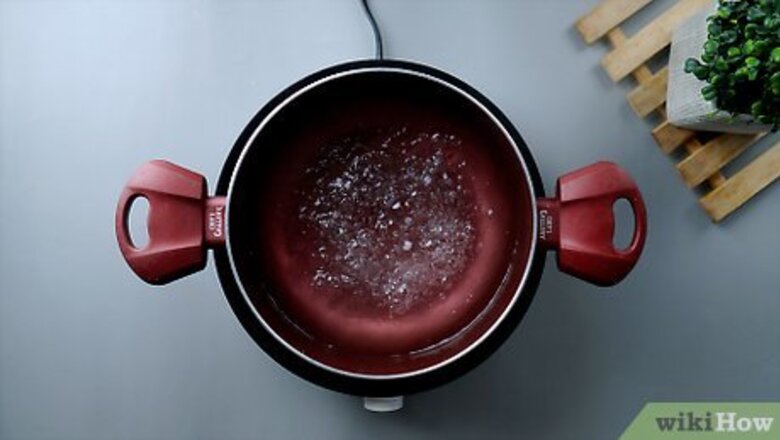
views
- Pour boiling water down your drain to flush out any food residue and buildup stuck inside.
- Alternatively, put vinegar and baking soda down the drain. Let it sit for 10 minutes, then rinse it out with boiling water.
- Remove clogs from your sink with a plunger or clean residue out with a drain snake. Pour enzyme or chemical cleaners into your drain if you can’t remove the blockage.
Flushing the Drain with Hot Water
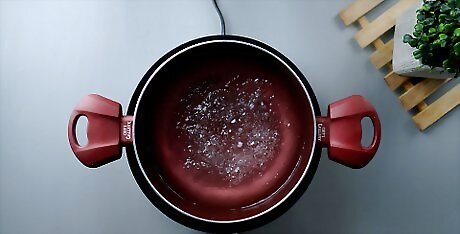
Boil a pot or kettle of water. Fill a large kettle or pot with water and put it over high heat on your stove. Wait until the water starts bubbling and reaches 212 °F (100 °C) before turning off the heat. Boiling water works best if your kitchen sink drains slowly but isn’t fully clogged. EXPERT TIP Chris Willatt Chris Willatt House Cleaning Professional Chris Willatt is the owner and founder of Alpine Maids, a cleaning agency in Denver, Colorado started in 2015. Alpine Maids has received Angie's List Super Service Award for three years in a row since 2016 and has been awarded Colorado's "Top Rated Local House Cleaning" Award in 2018. Chris Willatt Chris Willatt House Cleaning Professional Clean the drain every time you wash dishes to maintain it once it's clean. Chris Willatt, the owner of Alpine Maids, says: "The rubber gasket that's in your sink drain can get pretty dirty, which can lead to unpleasant smells. When you're washing dishes, take that gasket out and put it in the dishwasher, then scrub around it with a soapy sponge."
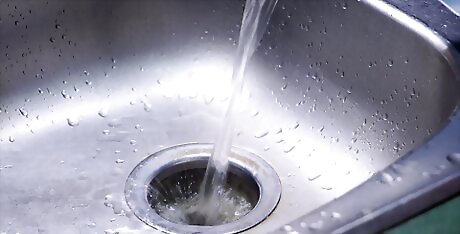
Pour the boiling water down your drain. Slowly and carefully pour the water directly down the drain, making sure not to spill or splash any liquid. If the water moves quickly and easily through the drain, then you’ve cleared the clog. The boiling water will melt away any residue stuck inside your drain so it washes through your pipes. Pouring boiling water down your kitchen drain also helps get rid of drain flies that lay eggs in the buildup inside your pipes.
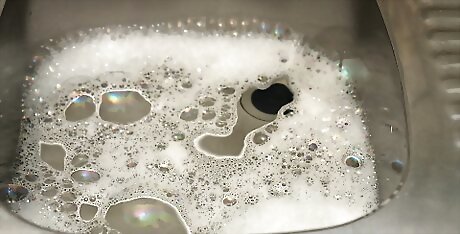
Target drains that have garbage disposals with hot, soapy, water. Put a stopper over your kitchen drain, and fill your sink with a few inches of hot water. Add a large squirt of dish soap to the water. Then, take the stopper out of your sink and turn on your garbage disposal. The soapy water will fill your garbage disposal and loosen smelly food residue that’s caught around the blades. The added dish soap helps cut through any grease or fat that’s stuck in your drain as well. Alternatively, add a few lemon wedges, coarse salt, and ice cubes to your disposal, then run the disposal until the ice is gone. The salt scrubs the blades, the ice knocks away debris, and the lemon deodorizes the drain. If any odor remains, let some baking soda sit in your disposal for 5-10 minutes, then rinse with hot water.
Using Baking Soda and Vinegar
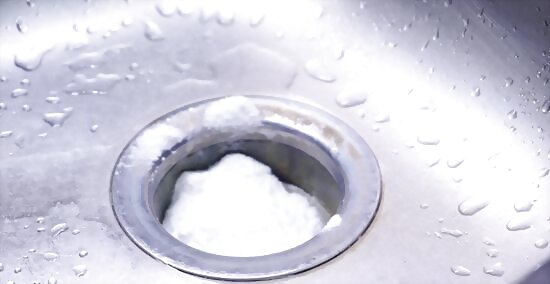
Put 1 cup (220 g) of baking soda down your sink drain. Scoop the baking soda directly into your kitchen sink drain. Use the end of a spoon or butter knife to push all the baking soda inside of the drain so it’s not just sitting on the surface. If you’re cleaning a really smelly drain, let the baking soda sit for about 15 minutes so it has a chance to absorb more odors. Baking soda acts as a natural deodorizer and abrasive scrubber to get rid of food and unpleasant odors from your drain. Baking soda is safe to use in your kitchen drain regardless of if you have a garbage disposal or not.
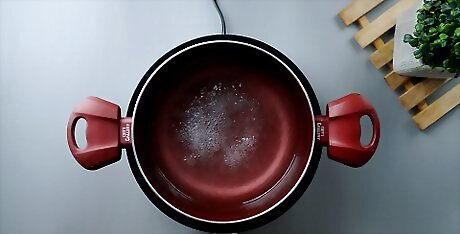
Boil 3 cups (710 ml) of distilled white vinegar. Add the distilled white vinegar to a pot or kettle, and set it over high heat. Let the vinegar sit for a few minutes, and take it off the heat once it comes to a rolling boil. White vinegar is acidic and has antimicrobial properties, so it kills bacteria and helps freshen up your sink drain.
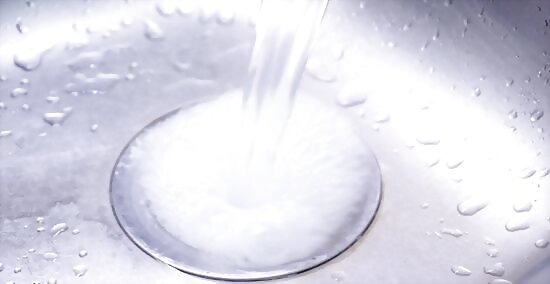
Pour the vinegar down your kitchen drain. Slowly pour the hot vinegar down your drain a little at a time. When the vinegar combines with the baking soda, it causes a bubbling chemical reaction that will loosen buildup and remove any bad smells from your drain.
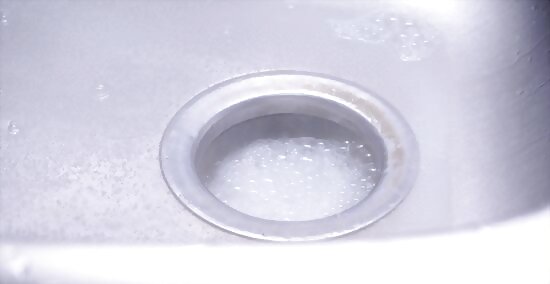
Let the baking soda and vinegar sit for 5–10 minutes. This will give the baking soda and the vinegar time to deodorize and clean the drain. As the baking soda and vinegar react, the fizzing will break down the residue stuck inside the drain pipes so it easily washes away.
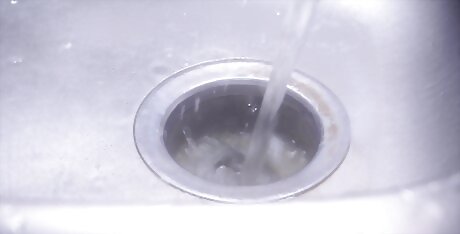
Flush the drain with boiling water. Set a pot or kettle of water over high heat on your stove, and let it come to a rolling boil. After the baking soda and vinegar have been inside your drain for 5–10 minutes, slowly pour the boiling water down your drain. This will remove and rinse out any scum or debris that’s leftover inside of your kitchen sink drain. To prevent your drain from getting too smelly or dirty, deodorize it with baking soda and hot vinegar once a week.
Easy Ways to Remove Clogs
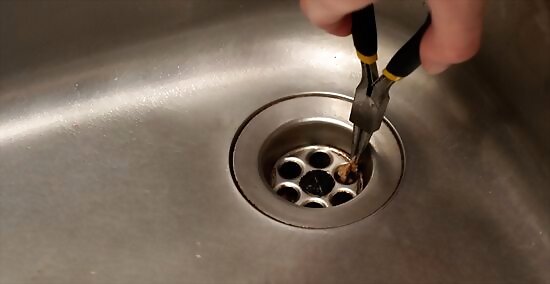
Pull out any obstructions you see with needlenose pliers. Shine a flashlight down your drain and look for any visible obstructions in the pipes. If you see a clog near the top of your drain or in your garbage disposal, reach in with your needlenose pliers and slowly pull it out. Unplug your garbage disposal so you don’t risk it turning on while you’re cleaning. If your disposal is hard-wired and doesn’t have a plug, then turn off the power at your main breaker box.
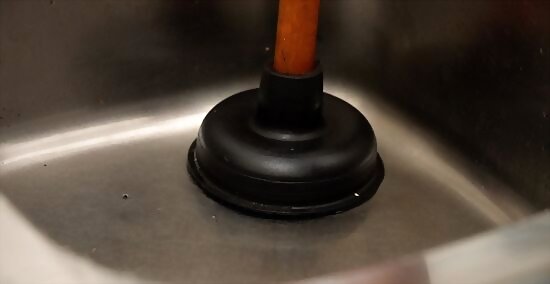
Try using a sink plunger to force the clog out of your drain. Set your plunger over the kitchen drain opening so it forms a watertight seal. Slowly press the plunger down, and quickly jerk the handle back up to loosen the clog. Keep moving the plunger up and down about 20–30 times before taking it out of your sink. Turn on your faucet and let water run through your drain. If the water flows without backing up, then the plunger removed the clog. Plug the overflow opening on your sink with a rag or washcloth. If you have a double sink, then plug the second drain while you’re plunging. Plungers work great if your drain is fully clogged and there’s standing water in your sink.
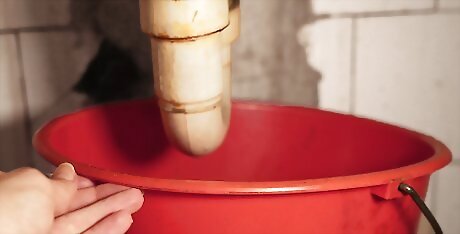
Remove and flush out the trap from the drainage pipe. The sink trap is the U-shaped piece connecting the drain to the waste pipe in your wall. Place a bucket underneath the trap to catch any spilled water. Remove the trap by unscrewing the pipe connections. Rinse the trap in a different sink or with your garden hose. If you still see residue inside, scrape it out with a wire hanger or a bottle brush. When you’re finished, just reattach the trap to your drain and run water through it. If your sink is still blocked after cleaning out the trap, it may mean the clog is further down the waste pipe in your wall. Avoid using your kitchen sink after you remove the trap so you don’t spill any water. If you’re worried about making a mess, plug the sink drain or turn off the faucet’s water supply using the valves under your sink.
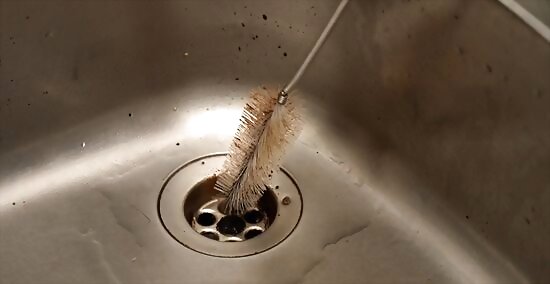
Use a drain snake to dislodge deeper clogs. Remove the trap from the drain pipe underneath your sink and set it aside. To use your drain snake, feed the end into the waste pipe in your wall. Spin the handle clockwise on the drain snake to feed it deeper into the pipe until you hit an obstruction. Then, turn the handle counter-clockwise to break apart the clog and pull the snake back out of the pipe. When you’re finished, reattach the sink trap and try running water through your drain. Check the manual for your drain snake to see if it can attach to a power drill. That way, you’re able to feed the snake into the pipe more quickly and can apply more force to remove the clog.
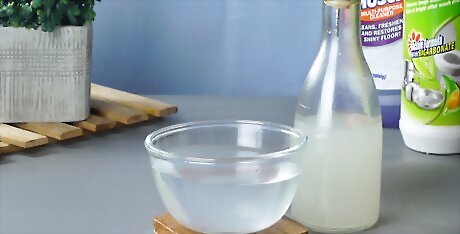
Remove grease and food residue with an enzyme cleaner. Bio-friendly cleaners contain natural enzymes that eat away at organic matter, like grease, soap, and fatty debris without using any toxic chemicals. Pour the cleaner directly into the drain and let it sit for several hours according to the directions on the label. After that, rinse the cleaner and any residual buildup out with warm running water. Some of the best enzyme cleaners to get for your drain include Instant Power Drain Clog Remover, Green Gobbler Drain Clog Remover, and Bio-Clean Bacteria Septic Cleaner. Alternatively, drop an enzyme drain cleaner stick down the drain once a month. Over time, the cleaner stick will break down to prevent clogs and deodorize your drain. Enzyme cleaners may not be effective for removing hard mineral deposits from your kitchen drain.
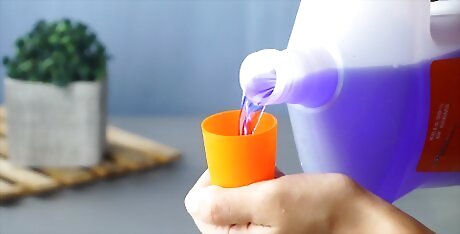
Pour in chemical drain cleaners as a last resort for minor clogs. Commercial drain cleaners often contain very strong chemicals or acids that break residue. Open the windows in your kitchen and put on rubber gloves before handling the cleaners. Because each drain cleaner works a little differently, follow the directions on the packaging carefully. Most times, all you’ll do is pour the cleaner down the drain, let it sit for a set amount of time, and rinse it out with warm water. Some effective chemical drain cleaners include Drano, Liquid-Plumr, and lye. Avoid mixing different chemical drain cleaners since they could create toxic fumes. After you pour drain cleaner into your sink, avoid using a plunger because the chemicals could splash back. Many plumbers recommend using chemical clog removers sparingly since they contain harmful ingredients that could potentially damage your pipes and discolor surfaces around the drain.
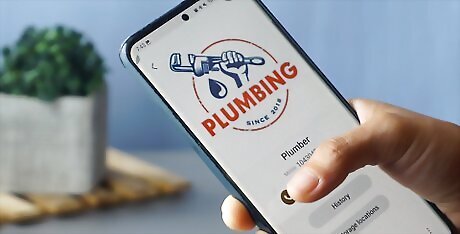
Hire a plumber if you’re unable to reach the clog yourself. If your kitchen drain is still clogged or you’re worried about causing damage, reach out to a local plumber and let them know the issue. They’ll be able to locate the clog more easily and clean out your entire drain safely and effectively. If you notice bad smells regularly from your kitchen drain and you have old metal drain pipes under the sink, a plumber may recommend replacing them with PVC instead. Slick PVC pipes won't clog as easily, since food and grease will have a harder time sticking to them. Ask friends or neighbors for recommendations on a good plumber in the area, or look for local plumbers with good customer reviews online.
















Comments
0 comment